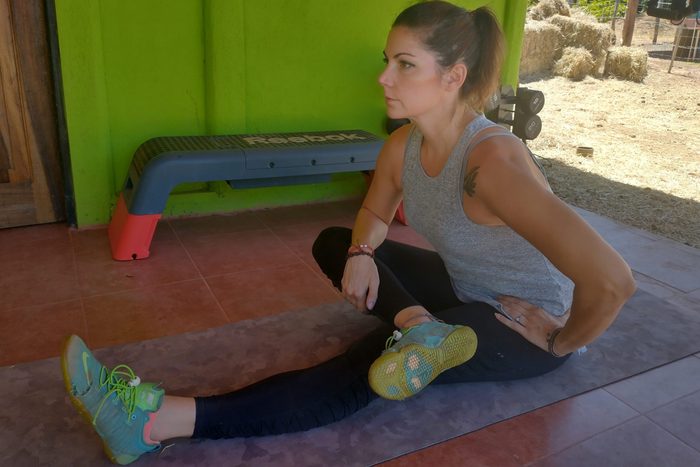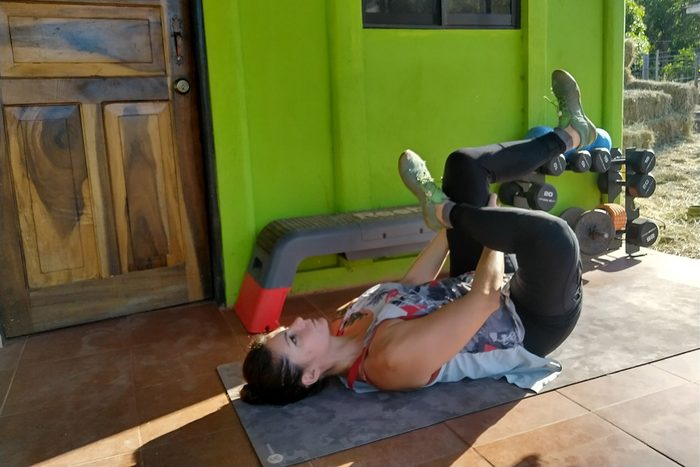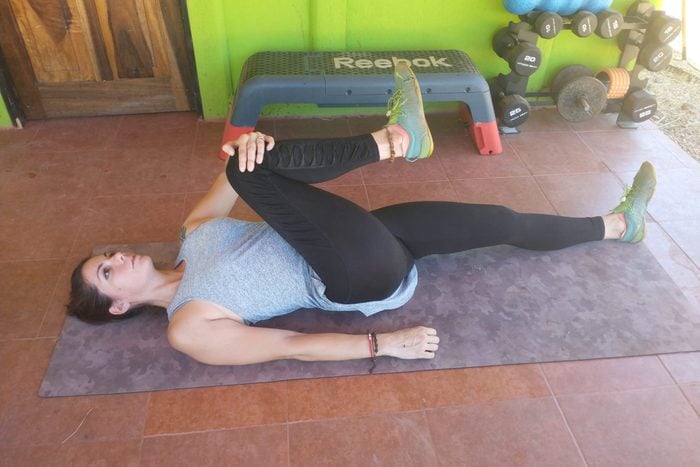Unlike the pecs, biceps, or glutes, the piriformis isn’t the type of muscle you hear about every day. But when your piriformis is tight or inflamed, talk about a pain in the butt (literally): You probably won’t be able to think about anything else.
This short, flat band of muscle runs from your sacrum (the very base of your spine) to your femur (your thigh bone) and helps with external rotation of the femur, as well as stabilization of the hip joint.
The sciatic nerve runs below or through this muscle, so if the piriformis becomes injured or inflamed due to overuse of the muscle itself or surrounding structures, it can irritate the sciatic nerve and lead to piriformis syndrome. And if you end up with piriformis syndrome, you’re going to be in a lot of pain.
(Related:4 Expert Tips You Need to Know to Stretch Properly)
What is piriformis syndrome?
Piriformis syndrome can either involve just the piriformis itself, which causes buttock pain, or the sciatic nerve as well, which can cause the same symptoms as sciatica: shooting pain or tingling beginning in the lower back, through the buttocks, down the thigh, and into the foot. The difference is that sciatica itself involves problems of the spine, while piriformis syndrome relates directly to problems with the piriformis muscle.
Regardless, the symptoms aren’t pleasant. “You’ll feel a tightness deep in the buttock,” says Lauren Lobert, physical therapist, certified strength and conditioning specialist, and owner of Apex Physical Therapy in Brighton, Michigan. “Many people report they feel like they want to press or push into the area but can’t go deep enough,” she says.
You may also feel pain when climbing stairs or inclines, increased pain when sitting for a long time, or a reduced range of motion at the hips.
(Related:What Is Dead Butt Syndrome? 6 Workout Moves That Help This Painful Condition)
How to treat piriformis syndrome
When a muscle is inflamed or tight, it often leads to restricted movement, which only compounds the problem. In this way, stretching can help reclaim or maintain a normal range of motion, which might help ease or reduce pain. But in addition to stretching, you may want to look at other forms of therapy to help address the inflammation.
Lobert points to physical therapy, which can not only help address the problem but prevent it from returning. In physical therapy, your therapist will work with you to strengthen the piriformis and surrounding muscles to correct any muscle imbalances that could cause the problem.
“In addition, dry needling can help,” she says. This procedure, performed by a physical therapist uses thin needleslike those used in acupunctureto treat underlying muscle trigger points (tight bands of muscle) and ease pain. “Foam rolling, massage guns, or rolling on a lacrosse ball are also great home treatment ideas to help get you relief,” she says.
It’s also important to note that if you have a job that requires you to sit or stay in one position all day, it’s not doing your piriformis any favors. “Prolonged sitting or standing can contribute to piriformis muscle tightness and discomfort,” says Preston Brown, physical therapist and owner of Prestige Therapy and Wellness in Milwaukee. “Try to minimize prolonged sitting and standing activities,” he says. “Changing positions will alleviate the stress on your muscles and give them the rest they need to support you better.”
(Related:A Guide to Back Pain Symptoms, Treatment, and Prevention)
Easy piriformis stretches for pain relief
If you feel that nagging or dull ache in your butt, stretching regularly may be exactly what you need to help ease the pain. Brown and Lobert point to the following stretches to help loosen up a tight piriformis.

Seated piriformis stretch
Sit on a mat with your legs extended in front of you and back tall and straight. Cross your right ankle over your left knee, and allow your right knee to open outward. You may feel a stretch deep in your buttocks from this action alone.
From this position, hinge forward at the hips, leaning your torso over your thigh until you feel a good stretch. You also can place a hand on the right thigh to gently press your knee closer to the mat. Hold the position for 20 to 30 seconds, release the stretch for a breath, then repeat two to three more times before switching sides.
(Related:10 Stretches That Can Help Strengthen Your Back)

Lying figure 4 piriformis stretch
Lie on your back on a mat with your knees bent and your feet flat on the floor. Cross your right ankle over your left knee, allowing your right knee to open outward, forming a “4” with your legs. Lift your left foot from the floor and use both hands to grasp behind your left thigh.
Gently draw your left thigh closer to your torso until you feel a good stretch deep in your right buttocks. If you can, press your right elbow to the inside of your right thigh to deepen the stretch slightly. Hold the position for 20 to 30 seconds, release for a breath, then repeat two to three more times before switching sides.
(Related:3 Simple Desk Stretches You Should Be Doing While Working From Home)

Cross-body piriformis stretch
Lie on your back on a mat with your left leg extended, your right knee bent, and your right foot on the floor. Lift your right foot and bring your right knee toward your chest. Use both hands to grasp the front of your right shin or knee.
From this position, use your hands to draw your right knee toward your left shoulder. Avoid twisting your torso or hips. When you feel a gentle stretch on the outside of your right buttocks, hold the position for 20 to 30 seconds. Release for a breath, then repeat two to three more times before switching sides.
Now that you know about piriformis stretches, here is how you can treat pandemic life’s most common aches and pains.
The post Got Buttock Pain? Try These 3 Piriformis Stretches for Relief appeared first on Best Health Magazine Canada.


0 Commentaires